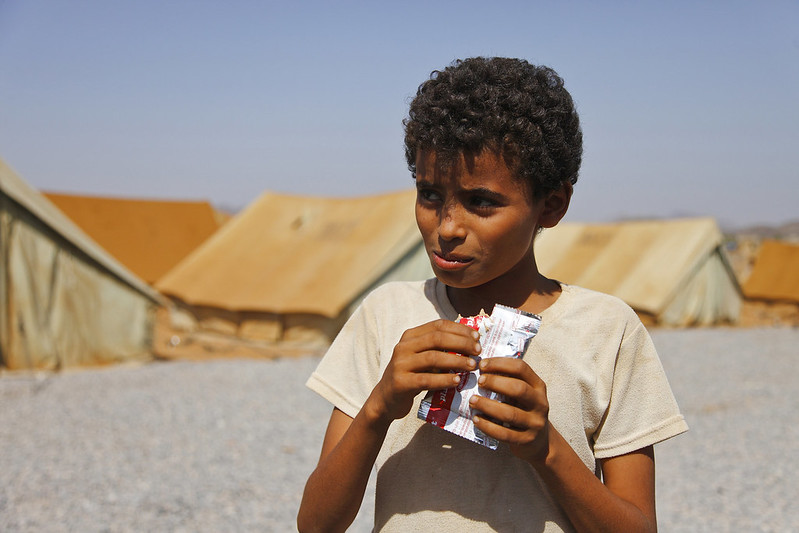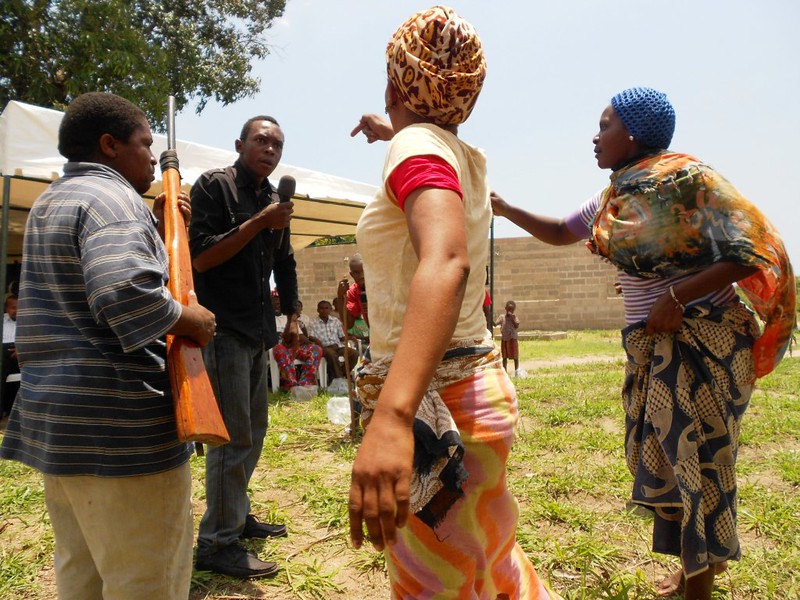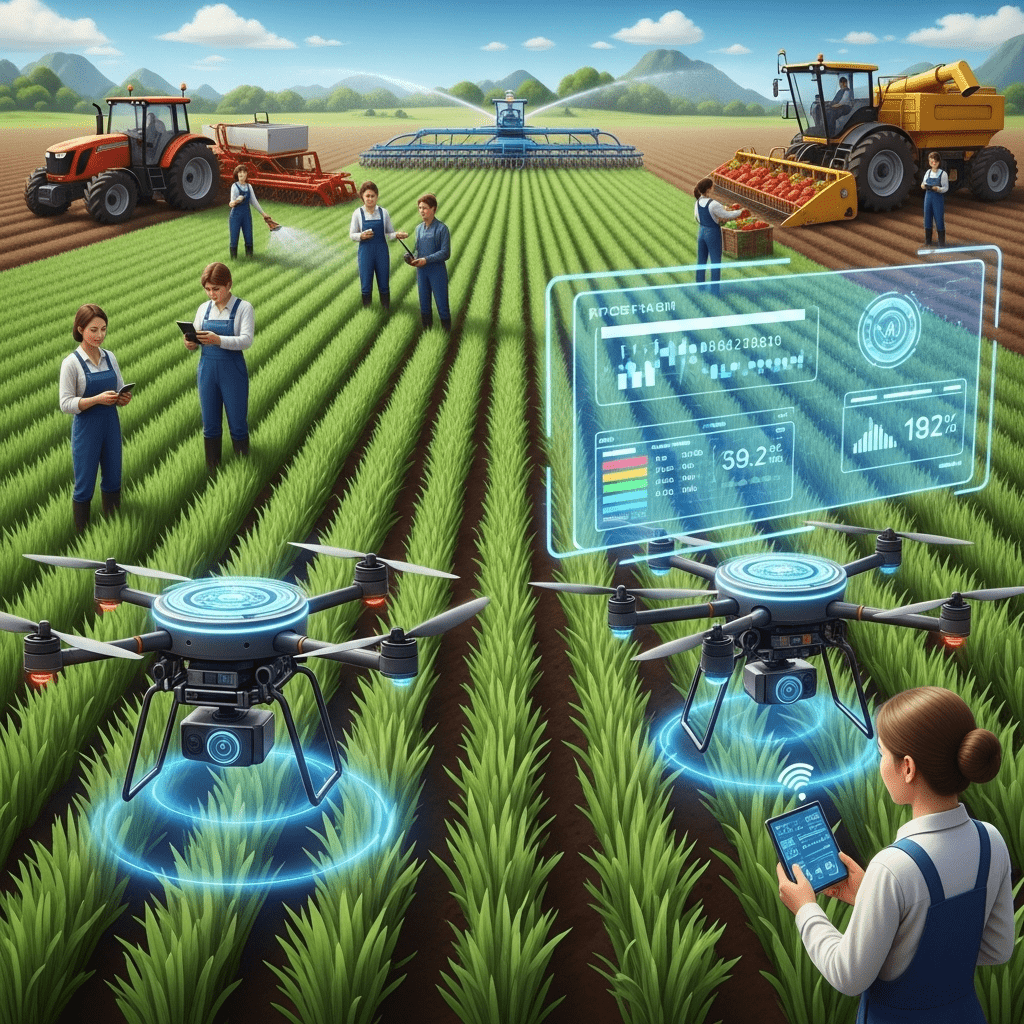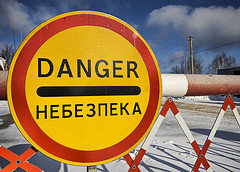Has the Hunger-GDP Relationship Crossed a Threshold?
by Alix Underwood
The world looked poised to end hunger in the mid-2010s, after decades of decline in the percentage of the population that is undernourished. People often attribute progress in the late 20th century to the technological advances of the “Green Revolution.” However, the revolution’s costs and benefits, and their distribution, are hotly contested. Many experts instead point simply to economic growth as the primary factor responsible for poverty reduction and, subsequently, hunger reduction.

Due to conflict and climate extremes, almost half of Yemen’s population was undernourished before COVID. (CC BY-NC-ND 2.0, IRIN Photos)
But things took a tragic turn toward the end of the decade. Undernourishment rose to levels the world hadn’t seen since 2007. Most experts attribute this to the COVID pandemic. Indeed, as supply chains have recovered in recent years, global undernourishment has leveled off.
However, the disturbing rise of hunger began before the pandemic, driven by conflict and, increasingly, climate change. With the exception of 2020, global gross domestic product (GDP) has grown all the while. We can say the same of GDP per capita, with the additional exception of 2009. Even in low-income countries (LICs), where undernourishment is most prevalent and continues to climb, GDP has grown modestly every year except 2020 and 2023. GDP per capita, on the other hand, has made a harrowing descent since 2010.
What if the exclusive focus on the need for change in LICs—whether in the form of economic growth or in the form of population reduction—blinds us to a key obstacle to the eradication of hunger? What if the key obstacle is persistent economic growth in rich countries?
What Is “Hunger”?
Eugenio Díaz-Bonilla is a visiting senior research fellow at the International Food Policy Research Institute. He has worked on development and poverty issues for more than 40 years. In an interview for the Steady State Herald, he emphasized the importance of well-defined objectives and metrics.
“The prevalence of undernourishment is a calories indicator, explains Díaz-Bonilla. “It’s a statistical estimation based on a country’s levels of calorie production and income distribution, or consumption variability. But that’s just one indicator. There is another that is more experiential, based on qualitative questions, and that is ‘food security.’”
For global analysis, Díaz-Bonilla prefers the less subjective undernourishment metric. Since the UN’s Food and Agriculture Organization started consistently tracking undernourishment in 2000, it peaked in 2002 at 825 million people. It hit an all-time low of 546 million in 2017, before making an unprecedented three-year climb to 698 million. Globally, undernourishment has declined again, but modestly; in 2024, it was still higher than in 2007.
In 2024, 625 million people lived in low-income countries; 34 percent of them were undernourished. (data from FAOSTAT and the World Bank)
These worrying developments are even more alarming when we look at LICs. Undernourishment has been steadily climbing since 2010, with exceptions in 2017 and 2022. LICs were home to 90 million more undernourished individuals in 2024 than they were in 2000.
It’s true that the population in LICs (a dynamic group, due to income changes) grew by 302 million to 625 million during the same period. However, the percentage of the population that is undernourished has also climbed steadily since 2010, with exceptions in 2014, ’17, and ’22.
It’s worth noting that as food-systems research has evolved, its scope has broadened to encompass far more than undernourishment, or even food security. Experts now consider the “triple burden of malnutrition”: undernourishment, micronutrient deficiencies, and over-nutrition. The latter manifests as overweight and obesity and could also be linked to excessive economic growth (and the corporate influence that often accompanies it).
Growing the Pie, Starting with Agriculture
In an interview with the Herald, sustainable development professor Paul Winters pointed out, “General growth in the economy is usually associated with growth in agriculture. That’s where poverty is, where food insecurity tends to be: in rural areas. So, if you’re growing agriculture, you should be able to get more food for people and improve their livelihoods. That’s why you expect food security to increase with economic growth.”
An economist by training, Winters draws from historical successes and failures to inform policy recommendations. Acknowledging our systems are flawed, he remarked that this hard reality can paralyze researchers and policymakers, keeping them from affecting any change at all. He gravitates toward policies that have been proven to work within the system.

U.S. restaurants waste over 11 million tons of food every year. (Pexels, Rachel Claire)
When it comes to food, the glaring systemic flaw is distribution. Winters reasons, “There’s plenty of food in the world, right? So, there’s no question it’s a distribution issue. It’s been shown thousands of times over that we have plenty of calories for everyone, way more than we need. We waste a ton of it, and we’d still have enough. So, at a global scale, it’s clearly distribution. But even on a country scale, it’s mostly distribution.”
The problem is that changing how the pie is sliced has always been more politically difficult than growing the pie. Until the recent increases in hunger, explained away by COVID and conflict, the less controversial grow-the-pie path has seemed to do the trick. A key reason for this is that growth tends to start with the agricultural sector, where most of the world’s undernourished work.
This fact aligns well with Brian Czech’s “trophic theory of money,” which is that money originates when increases in agricultural surplus (more mouths fed per farmer) free up hands for the division of labor and the development of other, non-agricultural sectors. Agricultural surplus marked the origins of money in a historic sense; it “made money a meaningful concept” and enabled societies to start using money as a means of exchange, store of value, and unit of account. But the relationship also exists in an ongoing sense; growth in agricultural productivity drives growth in the overall, real and monetary economy.
What if my Colossal Pie Slice Is Squashing your Too-Small Slice?
Winters kept bringing the conversation back to the national level. “It’s where these things are happening. To really get rid of food insecurity, you need growth in the subset of countries that are relatively poor. And the other ones don’t matter. In wealthy countries, it’s more about social policy.”
Winters was talking about eliminating food insecurity in wealthy countries, where it still exists, but the people afflicted by it are seldom assisted by growth in the aggregate. It’s strictly a matter of distribution in those countries, Winters said.
But the question here is: Does growth in wealthy countries increase hunger in LICs? Is it rendering economic growth in LICs less effective at eliminating hunger?
The most obvious and direct pathway for this rendering is climate change. Two-thirds of global warming is attributable to the world’s wealthiest ten percent. Their rapacious consumption contributes seven times more than the average wealth-holder to increases in heat extremes and six times more to Amazon droughts.
A boy navigates flood waters in Somalia, ranked last out of 127 countries in the 2024 Global Hunger Index. (CC 4.0, Rawpixel)
This wealth-consumption-climate-changing chain of events directly impacts food production. Adjusting for realistic farmer adaptation, in a high-emissions future, calorie yields from staple crops are estimated to be 24 percent lower in 2100 than they would be without climate change. The worst of these impacts will be felt by the same populations struggling with undernourishment.
The impacts are already being felt in Africa, home to almost half of the world’s undernourished. The continent has experienced agricultural productivity declines of 34 percent due to climate change.
Less-Direct Connections: MNCs and the Military-Industrial Complex
Climate change isn’t the only connection that can be drawn between economic growth in wealthy countries and undernourishment worldwide. Consider the world’s largest multinational corporations (MNCs), most of which are owned by investors in high-income countries (HICs). They are complicit in climate change, but that’s not all. MNCs execute land and water grabs abroad, with dire consequences for local populations and their food security.

In the Tanzanian village of Kiharaka, a local cultural group reenacts a land grab for World Food Day. (CC BY 2.0, Marc Wegerif)
Yet according to food-system experts like Díaz-Bonilla and Winters, the biggest cause of hunger, aside from the COVID blip, is conflict. Winters referenced a 2018 report that projected that “more than 80 percent of the world’s poorest will be living in fragile contexts by 2030.” He said, “COVID kind of screwed up the whole world. But a lot of food-security issues are really related to conflict.”
If it feels like a stretch to connect excessive growth in wealthy countries with conflict around the world, let’s test our flexibility. Resource scarcity and land-use change are prominent drivers of conflict. This brings us back to climate change and exploitation by MNCs, which increase scarcity and change land use across the planet.
Though Putin’s invasion of Ukraine is rarely linked to resource scarcity in the mainstream, he is undoubtedly interested in Ukraine’s amber waves of grain. Ukraine’s black soils would give him the double-barreled economic-growth shotgun of oil and one of the most productive grain belts on Earth. And this conflict’s hunger impacts have been devastating, both within Ukraine and in LICs worldwide.
Another, perhaps more abstract, pathway from growth in HICs to conflict-induced hunger elsewhere is the “military-industrial complex.” Let’s consider the famine unfolding in Gaza. 641,000 people—nearly a third of the population—already face catastrophic food insecurity, and 132,000 children under five years old are projected to suffer from acute malnutrition by June 2026.
There are many complex drivers of the conflict causing this famine. One of them is the enabling behavior of the United States government, which provides Israel with billions in military aid per year. These tax dollars flow to U.S. defense corporations. In the words of the Biden administration, they provide “significant and much-needed investments in the American defense industrial base.”
This are just a few examples of how the insatiable need for growth in an already too-big economy can contribute, ultimately, to hunger in a seemingly disconnected context.
What Would a Steady-State Food System Look Like?
Cornell researcher Matthew Gibson believes we have, indeed, crossed a threshold past which global economic growth no longer increases global food security. “Over the past 25 years, we have globally seen some improvement in the least food secure populations. But obesity and overall food insecurity have gone up. In this time, aggregate global GDP has gone from 34 trillion in 2000 to 111 trillion in 2024. To the extent that this was ever really the case, global economic growth in the 21st century is not leading to an absolute increase in global food security.”
So, what’s the alternative? How can wealthy countries degrow to a steady state economy in a way that promotes global food security? Gibson and Daniel Mason-D’Croz explored the potential alignment between food-system transformation and degrowth proposals. The two fields have not been well integrated to date, but Gibson and Mason-D’Croz found opportunities for “complementary and reciprocal perspectives to theorize and enact transformation.”
For example, the degrowth (and steady-state) goal to build cultures of “sufficiency” aligns well with food-system goals to reduce the production and consumption of animal-sourced foods and to reduce food waste. Also, the degrowth goal to universally provide for fundamental human needs translates well to the food-system goal of healthy, affordable food for all.

What is the role of agricultural innovation in a steady state economy? (CC BY 4.0, Easy-Peasy.AI)
Gibson and Mason-D’Croz also identified some potential areas of conflict. One of these is the role of technology and innovation, which are central to food system transformation policy. The techno-optimism prevalent in this field may not align well with degrowth. Nor does it comport with steady staters’ assessment of technological progress, which emphasizes the trophic origins (and therefore environmental impact) of the R&D sector. However, hopeful literature has emerged recently on “responsible innovation.”
Mason-D’Croz elaborated, “Increasing productivity is not a bad thing, but it should be part of a broader effort in creating systems that are efficient in improving human wellbeing and environmental sustainability. More responsible innovation is also more focused on unintended consequences and developing systems that are better able to identify and respond to them early on.”
Long-distance trade represents another potential conflict between degrowth and food-systems thinking. Wealthy countries decreasing consumption and food imports could negatively impact export-oriented economies.
An Inconvenient Truth that Degrowthers and Steady Staters Must Confront
This issue of “global dependencies” is an inconvenient truth for the degrowth and steady-state movements. Many people in low- and lower-middle-income countries rely on HIC demand for their livelihoods. If that demand decreases—due to decreased consumption or localization—we may see many people plunged into poverty and hunger.
The post-growth movements call for a planned, intentional transition, before it is forced upon us at great human and ecological cost. To achieve this, we must factor the inconvenient truth of global dependencies into our intentional planning. We need serious proposals for how to minimize impacts on vulnerable populations around the world.

The Ecuadorian constitution enacted in 2008 granted various rights to “Nature or Pacha Mama.” (CC-BY-SA-2.0, Asamblea Nacional de Ecuador)
If we are to avoid the colonialism that bred our unsustainable and inequitable growth economies, these proposals must be informed by the impacted populations themselves. There is fertile ground for collaboration in the Global South, where many compatible schools of thought have originated. Latin America, for example, is home to buen vivir, rights of nature, and dependency theory.
If we’ve crossed a threshold beyond which increases in global GDP no longer bring about decreases in global hunger, such international collaborations are more important than ever. The first step is for the world to recognize that we’ve crossed this threshold. The second step is international steady-state diplomacy, including Global South leadership toward sustainable, equitable food systems. To this end, CASSE has proposed an international Convention on Economic Sustainability, which might include “food security for all” in its charter. The third step is to roll up our sleeves and make it happen, motivated by a vision of post-growth food systems with zero hunger.
 Alix Underwood is managing editor at CASSE.
Alix Underwood is managing editor at CASSE.





Socio-economic analysis suffers from the same equity lens as with economic analysis, it is too broad and genetic. When, if ever, will analysis involve the impacts & outcomes from adopted economic policies, at all levels of govt and the non -profit sectors? General views and trends isn’t going to cut it to better address our needs.
Regarding “overall food insecurity” rising 2000 to 2024. In that 1/4C, human population grew from 6B to 8B, a 33% increase. It is little wonder that more people were malnourished. More cultivation, irrigation, fertilization, pesticides, fungicides, harvesting…resulted in increasing loss of topsoil, soil salinity, and sterile soil. Of course air and water pollution increased as well. One of the best ways to slow hunger and malnutrition is to promote women’s empowerment and access to contraception. Religions are addicted to growth, seeking larger flocks. Business seeks larger markets and cheap labor. Indebted governments seek more taxpayers and soldiers. Fertility has been declining from physical stresses on human bodies as well as from the success of family planning. The latter is the rational, humane choice.
I think you have remove Agricultural and Petroleum subsidies in the High Energy Consuming countries in the world
I do not accept the concept of Developed Countries –
Thermodynamic Paradigm
I’ve been studying agriculture in Central Illinois, one of the most productive regions due to a combination of deep, heavy soils, subsoil moisture storage and a pattern of (usually) timely summer storms with enough, but not too much rain. But we are losing soil and soil quality is falling. I suspect that to be sustainable, somewhere between 80 and 95 percent of farmland would need to be fallowed–with soil building cover crops. That would cut food production drastically. And not to mention that half of current food production relies on N from the Haber-Bosch process–with natural gas as the key input. So when gas runs out, we need a new way to make half the world’s food. Many past societies failed after exhausting soils. It’s still happening.
Yikes – I knew about the critical role of the Haber-Bosch process in modern agriculture, but didn’t know that natural gas is the key input. Well .. that’s not good, to put it mildly.
I encourage readers to click on to the “buen vivir” link in the last part of Alix’s magnificent article. Having lived part time in Bolivia during the past decades, I experienced the intended application of a “buen vivir” philosophy on exonomc policy. My understanding was that “buen vivir” involves living well in harmony with nature and with fellow citizens (anti-inequality). Because of this policy of joyous frugality, Bolivia’s “buen vivir” government was featured in the French “La Décroissance” magazing. Sadly after amazing initial successes, the Bolivian government chose a path of expediency: more dependency on international extractivism and less respect for “La Pachamama” (Mother Earth). Some of this growth expediency can be linked to the narcissim of politicians, which gets in the way of their best ideas. Even with today’s crisis in Bolivia, the fact that it is far removed from the impacts of the Military Industrial Complex seems to protect Bolivians from the extremes of food insecurity. During Bolivia’s initial anti-capitalist rebelliousness, an American congressmen threatened to send a naval fleet to the coast of Bolivia, ignoring the fact that Bolivia is landlocked.
I’d love to see an article with a deep dive into MNC land grabs – in LICs, in HICs; in the present and in the past; their strategies and tactics; the use of force; the specifics of what happens to the former inhabitants. Land grabs in the modern era began with the European Enclosure Movement, which essentially involved elites colonizing their own people. In England, the elites were not even the same genetic strain as those whom they colonized, as the elites descended from the Norman invasion. The European colonization movement grabbed land all around the world. Where they ran into developed economies, they demanded that the other open up for trade, as in what happened in Japan. Historically there were lots of boats, cannon, muskets, and disease involved in land grabs. But what do they look like nowadays? Do the corporations send mercenaries in to kick people off their land? Or do they make deals with corrupt government officials, who then do the dirty work?
This article bemoans LIC dependency on exports, but the reason for that dependency is a combination of government debt, corporate debt, and the conversion from subsistence agriculture (livelihood sovereignty) to commercial agriculture (wage labor servitude). Might land redistribution coupled with reinstitution of traditional food and clothing soveriegnty/subsistance solve the problem for the poor? But then what happens with the debt?
That’s the other thing this article ignores. Debt. GDP has to grow in order to service it. Even if interest rates are low, growth is needed just to repay principle because of fractional reserve banking, which creates money out of thin air without also creating new soil, oil, or other “resources” with which to make the production needed to repay the money. Exports are then driven by the need for money with which to service debt, in direct conflict with production to service the people supplying the labor.
Thank you for proposing this, Robin! I agree that land grabs is a great topic for a Herald article. They are at the center of the growth economy, enabling MNCs to grow much more and for much longer than they would if everyone around the world had true rights to the land they’ve depended on for generations. I’d also like to learn more about how grabs happen today. I’ll keep an eye out for a guest author who could cover this topic, and please let me know if you think of anyone.